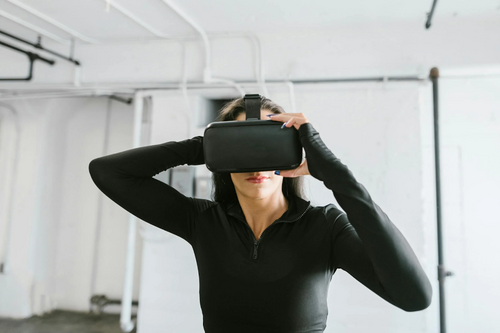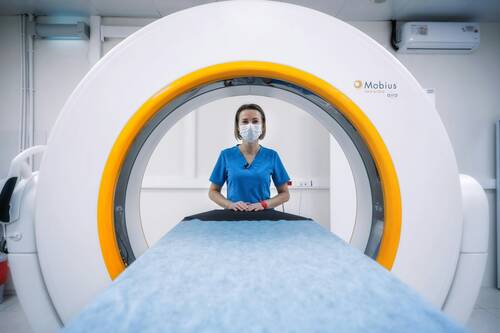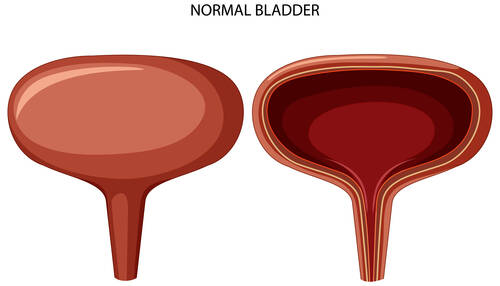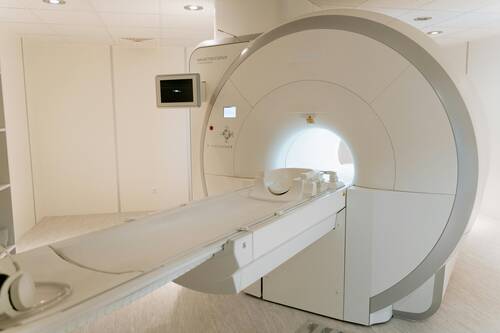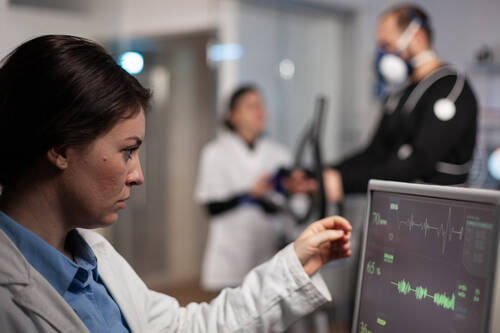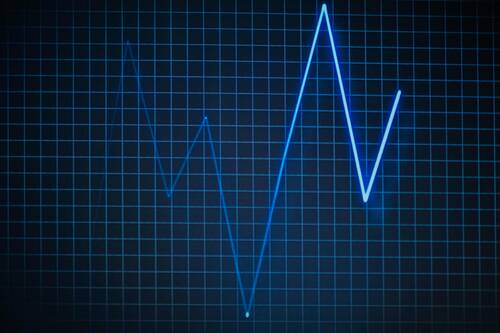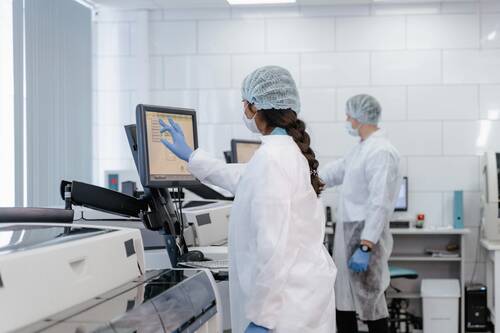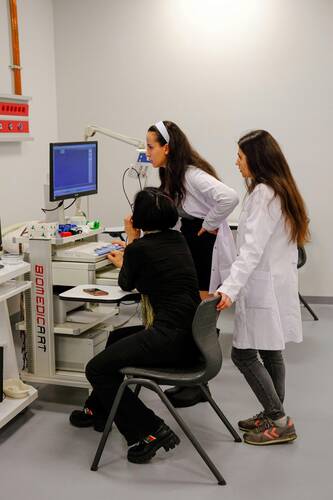In embracing technology, research facilities position themselves at the forefront of scientific progress. These innovations empower researchers to push beyond...
In recent years, the health tech industry has seen a surge in groundbreaking innovations, from wearable medical devices to AI-powered diagnostics. While these advancements can potentially transform healthcare, they often come with a barrier—complexity. Many of these technologies are sophisticated, requiring expert knowledge to understand fully. Public relations (PR) in health is critical in translating these innovations into accessible information for the general public. By making these advancements relatable and transparent, PR efforts build trust and enable wider adoption of life-improving technologies.
Challenges in Communicating Healthtech Innovations
Communicating health tech innovations effectively has its challenges. Healthtech is a field rooted in medical science and advanced technology, leading to complex terminology that can be hard for the average person to follow. For instance, AI applications in diagnostics or personalized medicine might sound overwhelming and abstract, making it difficult for the public to appreciate their value or even feel comfortable using them. Beyond complexity, there are ethical and privacy concerns. Data privacy, particularly in health, is a sensitive area, and the public often has questions or worries about how their data will be managed. Additionally, the fear of misuse or misinterpretation of health data can increase without clear communication. In this challenging landscape, PR is responsible for addressing both the technical aspects and the ethical questions in ways the public can understand and trust. (more…)
Bladder health is important for people who often face urinary problems. A portable bladder scanner is a very helpful tool that gives quick pictures of the bladder. It helps doctors check and monitor to treat bladder problems. Now, there are so many options to choose from. So, how do you know which one is right for you? This guide will help you understand six important things to consider before buying a portable bladder scanner. With this, you can help make the best choice.
1. Highly Accurate Measurements
Accuracy is very important when you look for a bladder scanner as a healthcare professional. You want a model that gives you correct measurements for all different bladder sizes. These accurate readings help you find problems like urinary retention and bladder issues without any catheter. You need to look for scanners that are very accurate even with small amounts of urine. The best ones can measure between 20ml to 99ml with a ± 15ml accuracy. This helps you catch even small changes in bladder size. This is important for patients with smaller bladders. Accuracy can be a bit different for large amounts of urine. A good portable bladder scanner should measure between 100ml and 999ml with a ± 15% accuracy. This helps you monitor patients of all ages with many different bladder sizes. (more…)
Technology has had its hands in almost every industry, but healthcare? That’s a whole new ballgame. Sure, medical advances and health-focused gadgets have been around for years, but the way data is shaking up the healthcare world is something else entirely. We’re talking about a future where your doctor might get more insights from data trends than a single blood test, where research moves faster because computers can help find patterns and even predict health risks.
This dive into healthcare tech doesn’t just focus on high-level, sci-fi dreams. It’s about what’s happening right now, how data is already changing healthcare behind the scenes, and how you might even notice some changes in your own doctor’s office sooner than you think. Let’s break it down and see how data could be the game-changer healthcare has been waiting for.
(more…)
AI and HealthCare, Author Interviews, Breast Cancer, Genetic Research / 06.11.2024
Hebrew University Study Uses AI to Identify New Breast Cancer Predisposition Genes
MedicalResearch.com Interview with:
Prof. Dina Schneidman-Duhovny PhD
Academic researcher
Hebrew University of Jerusalem
MedicalResearch.com: What is the background for this study? What are the main findings?
Response: The study analyzed genetic data of 12 families (~ 40 patients) with high incidence of breast cancer cases. Most families originate from ethnic groups that are poorly represented in public resources.
All participants were tested negative to all known breast cancer predisposing genes. We developed a novel approach to study genetic variants utilizing state-of-the-art deep learning models tailored for analysis of familial data.
The study highlighted 80 high-risk genes (out of > 1200 genes) and narrowed down on a group of 8 genes circulating in 7 out of 12 families in the study.
These genes are involved in a cellular organelle called the peroxisome and play a role in fatty acids metabolism. We show that these genes significantly affect breast cancer survival and use 3-dimensional protein structural analysis to illustrate the effect of some of the variants on protein structure.
These provide strong evidence of the peroxisome involvement in breast cancer predisposition and pathogenicity, and provide potential targets for patient screening and targeted therapies.
(more…)
Radiology, Technology / 06.11.2024
Essential MRI Parts That Need Regular Replacement and Tips for Finding MRI Spare Parts
MRI (Magnetic Resonance Imaging) machines are complex and rely on a range of parts working together to deliver clear imaging. Due to their heavy daily use in hospitals and clinics, some parts undergo more wear and tear than others. Replacing these components on time is crucial for ensuring accurate diagnostics and patient safety. Below, we’ll explore the MRI parts that most often require replacement and offer tips on how to find quality MRI spare parts.
Coils
What Are Coils? MRI coils are essential in detecting the magnetic resonance signals generated from within the patient’s body. They act as both the transmitter and receiver of radiofrequency (RF) signals, crucial for image quality. Why Are They Prone to Wear? Given their role in image acquisition, coils are highly susceptible to wear and tear. Issues often arise from physical damage (accidental drops or impacts) and electronic faults, as these coils are delicate. Common coil issues include signal loss and calibration problems. Replacement Tips Regular testing and calibration help extend the life of coils, but when they need replacing, opt for Original Equipment Manufacturer (OEM) coils to maintain image quality and compatibility with your MRI system. (more…)
Health Care Systems, Technology / 06.11.2024
Improving and Enhancing Healthcare Operations with Virtual Sitters
In recent years, virtual sitters have become a valuable addition to healthcare facilities, providing an innovative solution to improve patient safety, reduce operational costs, and optimize staff efficiency. These remote monitoring systems use technology to allow trained personnel to observe patients from a central location, intervening only when necessary. A virtual sitter can offer various benefits that can significantly enhance healthcare operations, supporting staff and promoting a safer patient environment.
Improving Patient Safety
Virtual sitters play a crucial role in enhancing patient safety by offering continuous monitoring of at-risk patients. Patients who are prone to falls, disorientation, or adverse reactions can be observed by virtual sitters, who use cameras and audio devices to keep an eye on them. These sitters can alert on-site staff if a patient attempts to leave their bed, tries to remove medical equipment, or shows signs of distress. By intervening in real time, virtual sitters reduce the likelihood of incidents that could harm the patient, leading to quicker responses and fewer injuries. (more…)
Technology / 02.11.2024
Infrared Non-Contact Thermometers vs. Traditional Ones: Comparing Accuracy, Speed and Convenience
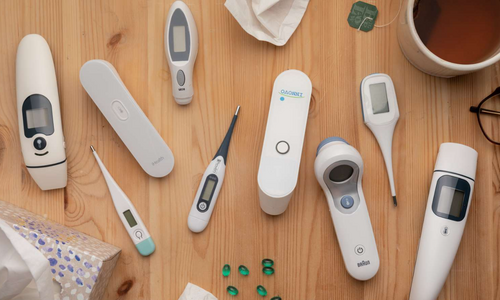 Body temperature measurement plays a crucial role in healthcare. Fluctuations in temperature often indicate the presence of disease and monitoring it also helps medical practitioners assess the effectiveness of treatments.
To get accurate measurements, healthcare professionals use thermometers. These devices are designed to measure body temperature in different ways, including oral, rectal, axillary, tympanic, and temporal methods. These areas are known for maintaining stable temperatures, and the accuracy and reliability of readings largely depend on the point of measurement. Therefore, selecting the appropriate thermometer for a healthcare facility is critical.
This article compares infrared non-contact thermometers with traditional thermometers. Understanding their advantages and disadvantages will help decide which best suits your needs.
(more…)
Body temperature measurement plays a crucial role in healthcare. Fluctuations in temperature often indicate the presence of disease and monitoring it also helps medical practitioners assess the effectiveness of treatments.
To get accurate measurements, healthcare professionals use thermometers. These devices are designed to measure body temperature in different ways, including oral, rectal, axillary, tympanic, and temporal methods. These areas are known for maintaining stable temperatures, and the accuracy and reliability of readings largely depend on the point of measurement. Therefore, selecting the appropriate thermometer for a healthcare facility is critical.
This article compares infrared non-contact thermometers with traditional thermometers. Understanding their advantages and disadvantages will help decide which best suits your needs.
(more…)
Lift chairs are an essential addition for seniors who need a bit of extra support in their daily lives. These specially designed chairs gently lift and lower, making it easier to sit down or stand up without straining muscles or joints.
For those dealing with arthritis, back pain, or balance issues, a lift chair can be much more than just a comfortable seat—it’s a practical aid that supports health and independence. Here’s a closer look at how lift chairs work, the health benefits they offer, and tips for choosing the right one.
How Lift Chairs Make Life Easier
Lift chairs, often called "chairs that lift for seniors," are recliners equipped with a motorized function that raises and tilts the seat forward. With the push of a button, the chair moves smoothly to help users stand up or sit down with minimal effort. This technology is especially helpful for anyone with limited mobility, allowing them to move safely and independently. (more…) Keeping up with the fitness sector isn't as easy as it seems, especially when new trends and tech emerge daily. Fitness apps are on the rise, but how do you remain ahead of the competition and provide actual value to users?
Fitness buffs today want more than a workout logging tool. They want data-driven insights, tailored recommendations, and wearable integration. Ignoring these features could lead to your app being uninstalled, along with many others. So, fitness wearables aren't merely devices; they're integral parts of the app ecosystem. You're setting a new standard by integrating your fitness app with wearables. To ensure that your fitness app is ready for the future, it is important to incorporate real-time data, user involvement, and personalized experiences. All this is made possible by smart wearables. Let's look at why adopting wearables can completely transform your app development strategy.
(more…)
Keeping up with the fitness sector isn't as easy as it seems, especially when new trends and tech emerge daily. Fitness apps are on the rise, but how do you remain ahead of the competition and provide actual value to users?
Fitness buffs today want more than a workout logging tool. They want data-driven insights, tailored recommendations, and wearable integration. Ignoring these features could lead to your app being uninstalled, along with many others. So, fitness wearables aren't merely devices; they're integral parts of the app ecosystem. You're setting a new standard by integrating your fitness app with wearables. To ensure that your fitness app is ready for the future, it is important to incorporate real-time data, user involvement, and personalized experiences. All this is made possible by smart wearables. Let's look at why adopting wearables can completely transform your app development strategy.
(more…)
Pharmacology, Technology / 16.10.2024
Pharmaceuticals Management in Hospital CPOE Systems Is Complicated and Here’s Why
Integrated within a hospital’s Computerized Physician Order Entry system or not, pharmacy management systems play a critical role in healthcare...
Health Care Systems, Technology / 15.10.2024
How Efficient IT Project Services Can Improve Healthcare Operations
With medical needs escalating and technology advancing at an incredible pace, the speed of patient care is about to become much faster and more effective. Healthcare organizations are under pressure to do more with less. Businesses are finally able to leave their tech logjam behind when they plug into lean IT project services. Suddenly, the thorny vines of procedure fall away, and genuine innovation gets a second wind. Low costs don't mean low-quality care.. What if healthcare operations could run like a well-oiled machine? For that to happen, they need to corral their IT projects, but that's a tall order given the specific challenges they face.
Streamlining Operations Through Digital Transformation
Hospitals and clinics are constantly faced with the challenge of reducing costs without sacrificing the level of care their patients receive. Efficient IT project services facilitate the implementation of digital tools and technologies that improve operational workflows and processes. One area where IT project services provide critical support is electronic health record (EHR) integration. Healthcare goes high-tech when EHR systems are properly set up. It's like having a bird’s-eye view of a patient's entire journey, allowing doctors to spot connections and make swift, informed decisions. Under the watchful eye of regulatory authorities like HIPAA, IT project managers expertly integrate these systems, implementing checks and balances to prevent malfunctions and mishaps. When automation technologies are properly integrated, they morph administrative tasks into background noise, allowing healthcare professionals to redirect their attention to the ones who need it most: their patients. Think of automation as a behind-the-scenes team player. By handing over the routine tasks, healthcare pros can refocus on what matters most: providing top-notch care. (more…)
Medical Equipment, Technology / 10.10.2024
A Guide to Choosing the Right Oxygen Tank Regulator for Medical Purposes
Oxygen tank regulators are very crucial in allowing the patient to obtain the quantity of oxygen supply that he or she needs with extreme accuracy. Getting an appropriate regulator oxygen tank is quite important, both in terms of safety and efficiency, since different applications have different specifications.
This guide shall help understand the key considerations for selection when the oxygen tank regulator is to be used in a medical setting.
(more…)
Hospitals, health care systems, doctors' office, medical labs and facilities are under increasing threat from cybercriminals. These remote, often foreign agents hijack critical medical operating systems and records, holding these important systems operationally hostage until a ransom is paid. The ransom may be paid in cryptocurrency and kept secret to avoid bad publicity. Therefore, medical systems must be on the forefront of cybersecurity, with advance phishing detection, staff education, and strict firewalls.
Learn more about the use of firewalls in protecting valuable health care systems and medical information below.
Key Takeaways:
- Firewalls are crucial for network security and differentiate between safe and unsafe traffic.
- Various firewalls, such as hardware and software firewalls, serve different functions.
- Implementing a firewall is essential for protecting sensitive information and maintaining data integrity.
What is a Firewall?
In the realm of cybersecurity, understanding the role of a firewall is incredibly important. A firewall acts as a barrier between your network and possible threats from external sources. Its purpose is to supervise and manage network traffic, both incoming and outgoing, according to established security regulations. Consider it as a guardian that allows only approved traffic to move ahead. In medieval times, castles utilized moats and drawbridges as barriers to safeguard valuable assets from invaders, a practice that is not novel. Likewise, firewalls play a vital role in protecting against cyber threats in today's digital era. (more…)
Technology / 08.10.2024
The Evolution of Fax: How Cloud-Based Fax Infrastructure Is Transforming Traditional Faxing Methods
The Fax Machine may seem 'retired' to many but in medical practices, it still plays an integral function.
Fax machines are used daily to send and receive lab reports, request insurance approvals, billing information and numerous other necessary communications. Faxing technology has changed however, and is more often 'cloud-based' instead of a desk-based machine. Learn about this evolving technology in this article.
Fax machines have long been a fixture in business, synonymous with secure and reliable communication. Traditional faxing involves transmitting scans of documents over telephone lines, a technology that has remained remarkably static over decades. Yet, as digital transformations sweep across industries, even the steadfast fax machine is undergoing a radical change. Cloud-based fax infrastructure is revolutionizing how businesses think about and use faxing in daily operations. Keep reading to understand how these advancements put a modern twist on a classic form of communication.
(more…)
Heart Disease, Surgical Research, Technology / 05.10.2024
Advancements in Cardiac Procedures Highlight Ever-Evolving Treatment Options
While a traditional open surgical approach may be better depending on the case, robotic surgery presents an array of advantages...
Gaming, Pediatrics, Technology / 23.09.2024
The Influences Shaping Today’s Youth
Today’s youth are growing up in a world that is constantly evolving, shaped by rapid technological advances, shifting social norms, and global connectivity. The influences affecting their lives are more diverse and accessible than ever before, making it both an exciting and complex time to navigate adolescence. Understanding these influences is crucial in shaping the future, as today’s youth are the leaders, thinkers, and innovators of tomorrow.
This article explores the key influences shaping today’s youth, from technology and social media to global movements and shifting cultural landscapes.
- Technology and Digital Connectivity
Legal-Malpractice, Regulations, Technology / 16.09.2024
Key Steps for Ensuring SFDA Compliance for Medical Device Registration
 Manufacturers must comply with the requirements set by Saudi Food and Drug Authority (SFDA) regulations to export into the Saudi market. The SFDA process of registering medical devices is necessary to ensure that the medical devices exported to Saudi Arabia are expected to meet safety and quality standards.
This blog explains how manufacturers can create a step-by-step navigation of the SFDA medical device registration process to ensure compliance and preparation for the market.
(more…)
Manufacturers must comply with the requirements set by Saudi Food and Drug Authority (SFDA) regulations to export into the Saudi market. The SFDA process of registering medical devices is necessary to ensure that the medical devices exported to Saudi Arabia are expected to meet safety and quality standards.
This blog explains how manufacturers can create a step-by-step navigation of the SFDA medical device registration process to ensure compliance and preparation for the market.
(more…)
Mental Health Research, Technology / 12.09.2024
How Does Social Media Actually Affect Our Mental Health?
 When it comes to social media usage, you don’t need to complete a masters in mental health nursing to understand that the media we consume via socials can have a dramatic impact on our state of mind.
Of course, these impacts are not always negative. Inspirational, aspirational, and almost always aesthetically pleasing - engaging with social media content can help us experience a certain ‘joie de vivre’, it can fuel our drive and ambition to succeed, and in some ways, also enhance our sense of community, connectedness, and belonging.
On the flip side, however, it can also be argued that social media imposes immense societal pressure - particularly on the young and impressionable - as well as the tendency to compare ourselves to others. This can cause vulnerable content consumers to see themselves in a negative light - which can lead to emotional distress, and in some cases, even develop into serious mental health conditions such as eating disorders, anxiety, and depression.
(more…)
When it comes to social media usage, you don’t need to complete a masters in mental health nursing to understand that the media we consume via socials can have a dramatic impact on our state of mind.
Of course, these impacts are not always negative. Inspirational, aspirational, and almost always aesthetically pleasing - engaging with social media content can help us experience a certain ‘joie de vivre’, it can fuel our drive and ambition to succeed, and in some ways, also enhance our sense of community, connectedness, and belonging.
On the flip side, however, it can also be argued that social media imposes immense societal pressure - particularly on the young and impressionable - as well as the tendency to compare ourselves to others. This can cause vulnerable content consumers to see themselves in a negative light - which can lead to emotional distress, and in some cases, even develop into serious mental health conditions such as eating disorders, anxiety, and depression.
(more…)
AI and HealthCare, Technology / 12.09.2024
Exploring the Opportunities: How ChatGPT Enhances the Capabilities of Modern Healthcare Workers
Integrating artificial intelligence (AI) into healthcare has opened numerous doors for improving efficiency and patient care. ChatGPT, an AI language model that can process and generate human-like text, is among the most promising advancements in AI-driven tools. Chat GPT for medical professionals is emerging as an innovative way to streamline workflows, assist with medical research, and enhance patient communication. This article delves into ChatGPT's opportunities for healthcare, its current use cases, and how it can transform the medical field.
 (more…)
(more…)
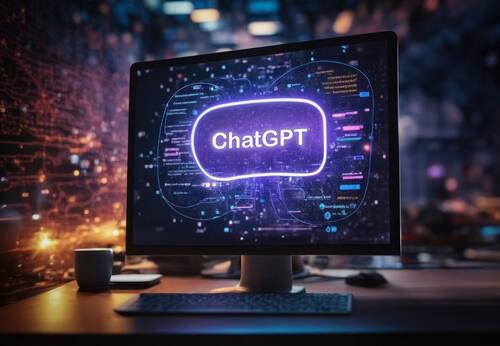 (more…)
(more…)
Downstream bioprocessing plays a crucial role in biotechnology, transforming raw biological materials into valuable products. It encompasses a series of steps that isolate, purify, and concentrate biosynthetic substances after their initial production. Downstream processing aims to refine and prepare biopharmaceuticals and other biotechnology products for safe, effective use.
This critical phase of manufacturing involves various techniques such as filtration, chromatography, and centrifugation. Each step in the downstream process is carefully designed to remove impurities, concentrate the desired product, and ensure its stability. The efficiency of these operations directly impacts the quality and cost-effectiveness of the final biotechnology product.
Advances in downstream bioprocessing have significantly improved the production of pharmaceuticals, enzymes, and other biological compounds. As the biotechnology industry continues to evolve, optimizing downstream processes remains a key focus for enhancing overall bioprocess efficiency and product yield. This guide will explore the essential components of downstream bioprocessing and their importance in modern biotechnology applications.
(more…)
Education, Electronic Records, Technology / 06.09.2024
Can Medical Education Benefit from EHR Systems Integration?
As we stand today, EHR systems are not a part of the medical curricula. But med students go on to work in hospitals or start their own practice that would definitely involve EHR systems. According to the Office of the National Coordinator for Health Information Technology (ONC), 96% of hospitals use EHR systems, which is almost the entirety of the healthcare setup.
Integrating Electronic Health Records (EHR) into medical education can have several benefits for prepping future healthcare professionals. This approach can potentially make learning better for medical students and ultimately boost patient care quality.
Moreover, specialized areas like cardiology medical billing could benefit significantly from early exposure to EHR systems, helping students understand the intricacies of managing billing in these complex fields.
This article covers the potential benefits of EHR systems integration into medical education, challenges, solutions, and more.
Key Takeaways:
- Integrating EHRs makes learning better for medical students.
- Improves doctor-patient communication.
- Offers easy access and better organization for students.
- Tackles challenges related to documentation and professionalism.
- Hands-on experience and simulation training are key for effective learning.
- Hospital policies and liability concerns can limit EHR access.
- Proper educational frameworks are crucial for successful EHR adoption.
- EHRs contain real-world scenarios and promote understanding of clinical workflows.
Medical negligence claims can have serious financial and reputational consequences for hospitals and medical businesses. In recent years, there has been a concerted effort within the healthcare industry to mitigate these risks by improving practices, upgrading equipment, and implementing more robust training programs. By taking proactive measures, hospitals and medical businesses aim to reduce the likelihood of medical errors, enhance patient safety, and provide the highest standard of care. This article explores the various strategies that healthcare providers are adopting to prevent potential medical negligence claims and ensure patient trust and safety.
One of the most significant ways hospitals and medical businesses are leveling up is by investing in state-of-the-art medical equipment. Modern, reliable equipment is crucial for accurate diagnosis, effective treatment, and overall patient safety. Outdated or malfunctioning equipment can lead to misdiagnosis, delayed treatment, and, ultimately, medical negligence claims.
(more…)
Health Care Systems, Legal-Malpractice, Technology / 05.09.2024
The Need for Streamlined Contract Management in Healthcare
Effective management of contracts is becoming increasingly critical for medical businesses. From managing vendor agreements and patient consent forms to navigating complex compliance requirements, contract management in the healthcare sector involves numerous challenges. As a result, more medical businesses are looking to adopt contract management software to streamline their operations, ensure compliance, and mitigate risks. This article explores why contract management software is becoming an essential tool for medical businesses and how it can help improve efficiency and reduce errors.
 Medical businesses, including hospitals, clinics, and healthcare providers, deal with a high volume of contracts daily. These contracts can range from vendor agreements and service-level agreements to insurance contracts and patient consent forms. Managing these contracts manually can be cumbersome, error-prone, and time-consuming, leading to potential legal and financial risks.
(more…)
Medical businesses, including hospitals, clinics, and healthcare providers, deal with a high volume of contracts daily. These contracts can range from vendor agreements and service-level agreements to insurance contracts and patient consent forms. Managing these contracts manually can be cumbersome, error-prone, and time-consuming, leading to potential legal and financial risks.
(more…)
 Medical businesses, including hospitals, clinics, and healthcare providers, deal with a high volume of contracts daily. These contracts can range from vendor agreements and service-level agreements to insurance contracts and patient consent forms. Managing these contracts manually can be cumbersome, error-prone, and time-consuming, leading to potential legal and financial risks.
(more…)
Medical businesses, including hospitals, clinics, and healthcare providers, deal with a high volume of contracts daily. These contracts can range from vendor agreements and service-level agreements to insurance contracts and patient consent forms. Managing these contracts manually can be cumbersome, error-prone, and time-consuming, leading to potential legal and financial risks.
(more…)
Health Care Systems, Technology / 04.09.2024
Improving Patient Care Through Effective Healthcare Management
 Delivering excellent care requires a combination of medical expertise and well-structured management practices. Healthcare management plays a critical role in making sure that hospitals, clinics, and other medical facilities run smoothly, allowing healthcare professionals to focus on treating patients. By overseeing the operational side of healthcare, effective managers create environments where patients can receive faster, more efficient, and higher-quality care.
The Importance of Healthcare Management in Patient Care
Healthcare managers are responsible for coordinating services, managing resources, and streamlining processes to improve patient outcomes. A well-managed healthcare facility allows doctors, nurses, and other medical staff to focus on patient care without worrying about administrative or logistical issues.
Good management also plays a role in improving the patient experience. When healthcare facilities are well-organized, patients receive care in a timely manner, their concerns are addressed, and they feel confident in the quality of service they are receiving. This level of coordination is essential for creating a positive healthcare environment, one where patients feel supported and cared for throughout their treatment process.
(more…)
Delivering excellent care requires a combination of medical expertise and well-structured management practices. Healthcare management plays a critical role in making sure that hospitals, clinics, and other medical facilities run smoothly, allowing healthcare professionals to focus on treating patients. By overseeing the operational side of healthcare, effective managers create environments where patients can receive faster, more efficient, and higher-quality care.
The Importance of Healthcare Management in Patient Care
Healthcare managers are responsible for coordinating services, managing resources, and streamlining processes to improve patient outcomes. A well-managed healthcare facility allows doctors, nurses, and other medical staff to focus on patient care without worrying about administrative or logistical issues.
Good management also plays a role in improving the patient experience. When healthcare facilities are well-organized, patients receive care in a timely manner, their concerns are addressed, and they feel confident in the quality of service they are receiving. This level of coordination is essential for creating a positive healthcare environment, one where patients feel supported and cared for throughout their treatment process.
(more…)
Exercise - Fitness, Technology / 04.09.2024
Revolutionizing Athlete Care: Beyond Traditional Medicine
The Convergence of Sports and Functional Medicine
In the ever-evolving world of athletic performance and overall wellness, a new paradigm is emerging. The intersection of sports medicine and functional medicine is creating a revolutionary approach to athlete care, injury prevention, and optimized health. This innovative fusion is reshaping how we think about peak performance, recovery, and long-term well-being.Understanding the Dual Approach
The Role of Sports Medicine
Sports medicine has long been the cornerstone of athlete care. Focused on treating and preventing injuries related to sports and exercise, this specialized field has been crucial in keeping athletes on the field and in top form. From acute injury management to rehabilitation programs, sports medicine doctors are the first line of defense for athletes at all levels.The Functional Medicine Perspective
Functional medicine, on the other hand, takes a more holistic view of health. It seeks to identify and address the root causes of health issues, rather than simply treating symptoms. This approach considers the complex web of interactions in the patient's history, physiology, and lifestyle that can lead to illness. (more…)
Home care has become pivotal in supporting the US’s aging and home-bound population. And, like other fields in the healthcare industry, home care agencies are transforming their operations through the integration of artificial intelligence (AI). AI’s capabilities offer promising solutions to many of the daily challenges faced by home care providers, caregivers, and patients alike.
1. Enhanced Patient Monitoring
One of the most significant contributions of AI to home care is its ability to monitor patients in real-time. By tracking vital signs, detecting anomalies, and predicting potential health risks before they become critical, AI can alert caregivers and home care providers if a patient’s heart rate falls outside of a safe range, if a fall has occurred, or if medications were missed, among several other instances. AI allows for timely interventions, so caregivers and home care providers can provide high quality, proactive care. (more…)
Exercise - Fitness, Technology, Weight Research / 02.09.2024
The Role of Technology in Modern Fitness: From Apps to Smart Scales
Technology has revolutionized and reshaped the modern fitness industry in recent years. Its role in the fitness sphere has shifted from supporting to key, changing how people approach health and wellness.
With the rise of mobile apps, wearable technology, and smart scales, staying on top of your health has never been easier and more accessible. This fitness technology is available to everyone, catering to various preferences and fitness levels.
As a result, people get to optimize their workouts, track their progress, and adopt healthier lifestyles. Some tools include personalized plans, nutritional advice, and a more holistic view of one’s health.
Continue reading to learn more about how fitness apps and smart scales can help you track and achieve your goals and adopt a better approach to your health.
(more…)
Author Interviews, Technology / 29.08.2024
The Rise of Mobile Health Monitoring Apps: Benefits, Challenges, and Future Trends
The astonishing growth in technology is one of the most important events that has led to groundbreaking changes in the healthcare industry.
The impact is increasingly due to the growing usage of mobile devices to track and monitor health.
A mobile health monitoring app is a software application program that can be installed on a smartphone or a tablet computer to collect, store, and transmit information relating to personal health. Mobile health apps heavily depend on the data provided by various devices such as fitness trackers, and other wearables. The increasing number of mobile health apps reflects the great potential, with an expected global market value of $33.17 billion by 2023, with an anticipated rise to $88.70 billion in 2032.
Benefits of Mobile Health Monitoring Apps
Real-Time Health Tracking: Using these applications individuals can easily track and monitor their health vitals to get instant insights and take timely actions if needed. Improved Patient Engagement: By having regular details about their health individuals can stay motivated to maintain their health at the top level. In this way, following treatment plans becomes easier. Remote Monitoring: mHealth apps open the door to remote treatment by allowing doctors to track the health vitals of patients from anywhere. Personalized Health Insights: Individuals get personalized advice from these health monitoring software solutions which simplifies health management. Cost Savings: Health monitoring applications can help identify serious medical conditions early. Early identification and treatment can save huge medical expenses. (more…)
As we continue to live in a world where technology is advancing day by day, its impact on various aspects of our lives grows ever more significant.
As much as we believe that the elderly are so far untouched, the new age interactive use of technology has not only brought seniors close to use of gadgets, but interestingly they are engaging and entertaining.
By adopting various digital tools and platforms, seniors can maintain their independence, stay connected with loved ones, and manage their physical and mental health more effectively.
This article explores how seniors can use technology to enhance their health and well-being and provides practical tips on incorporating these innovations into their daily lives.
(more…)
One area where technology is making a profound difference is in the health and well-being of seniors, with innovations such as telemedicine Colorado offering accessible healthcare solutions.

